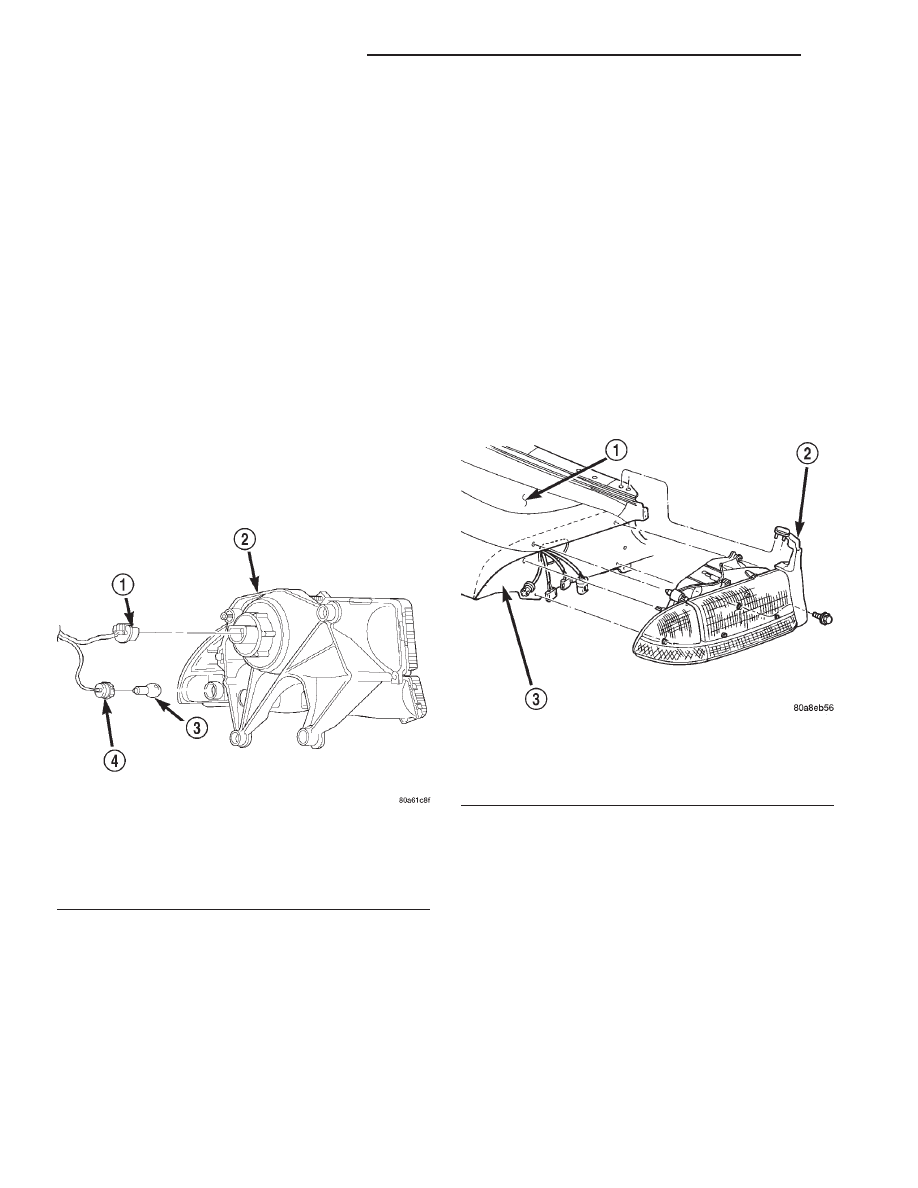Dodge Dakota (R1). Manual - part 332

(2) Install and tighten the screws that secure the
headlamp switch. Tighten the screws to 2.2 N·m (20
in. lbs.).
(3) Reconnect the wire harness to the headlamp
switch.
(4) Install the cluster bezel onto the instrument
panel (Refer to 23 - BODY/INSTRUMENT PANEL/
CLUSTER BEZEL - INSTALLATION).
(5) Connect the battery negative cable.
HEADLAMP
REMOVAL
(1) Disconnect and isolate the battery negative
cable.
(2) Remove headlamp assembly. (Refer to 8 -
ELECTRICAL/LAMPS/LIGHTING
-
EXTERIOR/
HEADLAMP UNIT - REMOVAL).
(3) Remove the retaining ring holding bulb to
headlamp.
(4) Pull bulb socket from headlamp (Fig. 10).
(5) Grasp bulb and pull from socket.
INSTALLATION
CAUTION: Do not touch the bulb glass with fingers
or other oily surfaces. Reduced bulb life will result.
(1) Position bulb into socket and push into place.
(2) Position bulb socket in headlamp.
(3) Install retaining ring holding bulb to head-
lamp.
(4) Install headlamp assembly.
(5) Connect the battery negative cable.
HEADLAMP UNIT
REMOVAL
(1) Disconnect and isolate the battery negative
cable.
(2) Remove the bolts attaching headlamp to the
inner fender panel (Fig. 11).
(3) Grasp the headlamp and firmly pull the head-
lamp to disengage it from the panel.
(4) Disengage the connector from the headlamp
bulb.
(5) Separate bulb from headlamp.
(6) Remove the bulb sockets from the front park/
turn signal/side marker lamps.
(7) Separate headlamp module from vehicle.
INSTALLATION
CAUTION: Do not touch the bulb glass with fingers
or other oily surfaces. Reduced bulb life will result.
(1) Install bulb sockets for the front park/turn sig-
nal/side marker lamps.
(2) Engage the connector to the headlamp bulb.
(3) Position headlamp in inner fender panel and
firmly push headlamp inward to lock into place.
(4) Install the bolts attaching headlamp to the
panel.
(5) Connect the battery negative cable.
Fig. 10 Headlamp Bulb
1 - HEADLAMP BULB SOCKET
2 - HEADLAMP
3 - BULB
4 - SIDE MARKER LAMP BULB SOCKET
Fig. 11 Headlamp
1 - FENDER
2 - SEAL
3 - INNER FENDER
8L - 16
LAMPS/LIGHTING - EXTERIOR
AN
HEADLAMP SWITCH (Continued)